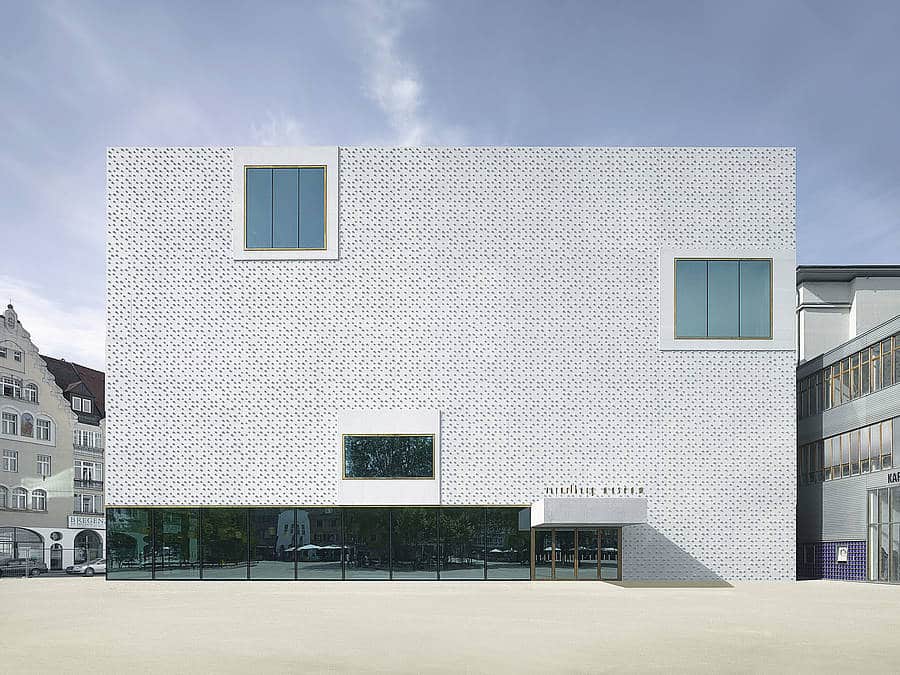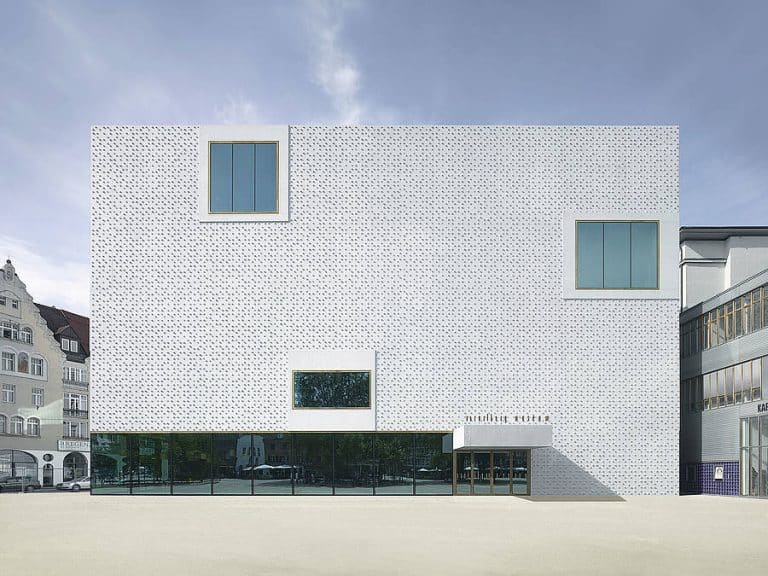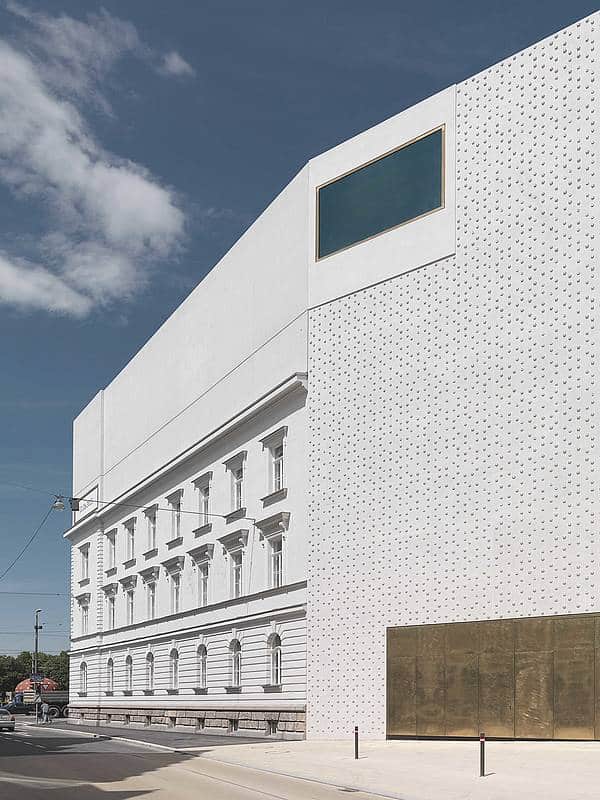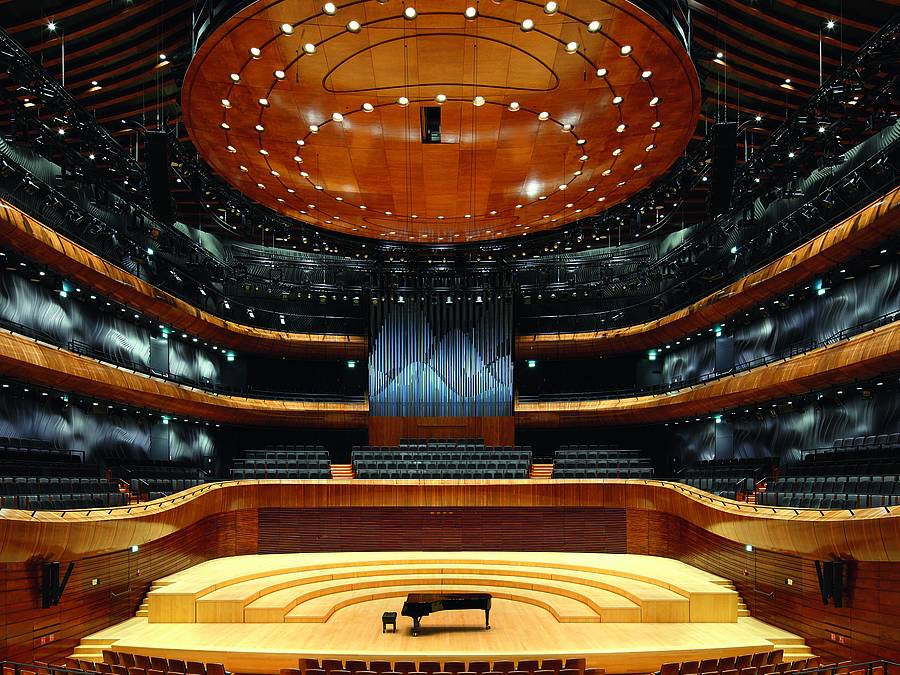Both architects agreed on the South Tyrolean artist Manfred Alois Mayr, with whom they developed out a very particular concrete relief for the main surface of the new complex.
The exhibits of the Vorarlberger Landesmuseum, comprising a vast variety of ancient vessels, served Mayr as inspiration for his idea. The chalices and bowls inspired him to use a modern everyday container for his art-in-architecture – the PET bottle. He started to experiment with plastic bottles and when taking an impression of the bottle’s base, he realized that it was reminiscent of a flower’s blossom. Eventually, images of thirteen different bottle bases are found on the concrete surface. It was Mayr’s desire to scatter the different motifs across the concrete surface without letting the arrangement appear unplanned. He turned to Urs B. Roth for help, an architect, mathematician and artist himself. He developed a mathematical method for the dispersion of the pattern assigning each blossom a specific place on the concrete surface based on a grid.






